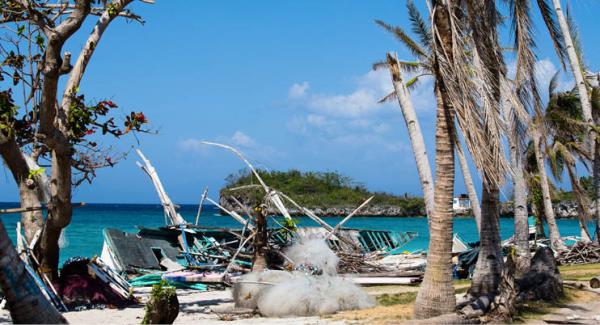05 December 2023

Massive devastation caused by a life-threatening super-typhoon bringing torrential rains, flooding, landslides, and 160mph winds included severe physical damage to Globe’s charging site in Vizmin, resulting in 23 million people being suddenly cut off from communications.
Repairing the site would take months to complete. However, Globe and Amdocs managed to successfully restore essential mobile and data services in under eight hours, giving back critical connectivity at a time when it was needed the most.
Modernising disaster recovery
Globe set out to build a comprehensive disaster recovery plan – including a strong 4G network – and worked with Amdocs to design an innovative infrastructure that would provide Globe with geographical resilience.
Although the main objective of the modernization project was to extend Globe’s charging capabilities to support 5G, Globe now had access to extensive disaster recovery capabilities built into the new version of the Amdocs Turbo-Charging system. The original Turbo-Charging technology enabled service providers to support massive subscriber growth without substantial hardware investment, leading to significantly reduced hardware costs and lower total cost of systems ownership.
With the newest version, Globe was able to respond effectively in the face of the typhoon thanks to its comprehensive disaster recovery plan with innovative fall-back capabilities which had been designed and operationalized together with Amdocs Delivery and Managed Services (SmartOps) experts as part of the Amdocs Turbo-Charging update project. This afforded Globe both the opportunity and tools to effectively counter the Philippines’ significant environmental and geographical challenges resulting from facing approximately 20 typhoons a year.
Splitting up subscribers
With the new disaster recovery capabilities, Globe’s entire 86 million subscribers (who were all located on a single charging site) could now be divided and migrated across three separate charging sites located in different geographical regions to reduce the potential impact of any outages.
“It’s important because we know communication is aid,” said Emmanuel Estrada Globe Telecom SVP, technology strategy & service integration. “It’s like water and electricity. You need to be able to reach your loved ones and find out what’s going on around you. To do that you need connectivity.”
In addition to splitting their subscribers geographically, Globe also established a fallback disaster-relief charging site to be operationalized if any of the three main sites should fail. To ensure that the disaster relief site could be put into operation as quickly as possible, there was continual real-time synchronization of data between the production sites and disaster relief site using a virtualization management layer to run servers, storage, and software programs. The virtualization enables Globe to route critical platforms nationwide to ensure that essential mobile and data services remain available even during crisis situations.
In addition, Globe and Amdocs activated on-ground teams to carry out practice drills and disaster preparedness as part of the recovery plan.
100% recovery of essential services

As soon as the Vizmin site failed due to extensive physical damage from the super-typhoon, Globe and Amdocs disaster recovery teams across the world were activated and immediately began the process of operationalizing the disaster relief site.
Thanks to efficient, thorough preparation combined with the extensive disaster recovery capabilities embedded in Amdocs Turbo-Charging and the fact that the disaster relief site already had all the data because it had been continuously replicated in real-time beforehand, the site was fully operational in less than eight hours.
Globe and Amdocs’s disaster recovery efforts resulted in 100% recovery of essential mobile and data services. Considering the technical complexities involved in achieving this, this was a major success for the multiple teams working on recovery assistance, across different time zones and countries.







